I do love a bonkers thing, but not as much as I love a good story. A chance find of a richly-coloured oil on canvas that made me smile last weekend fulfills both.
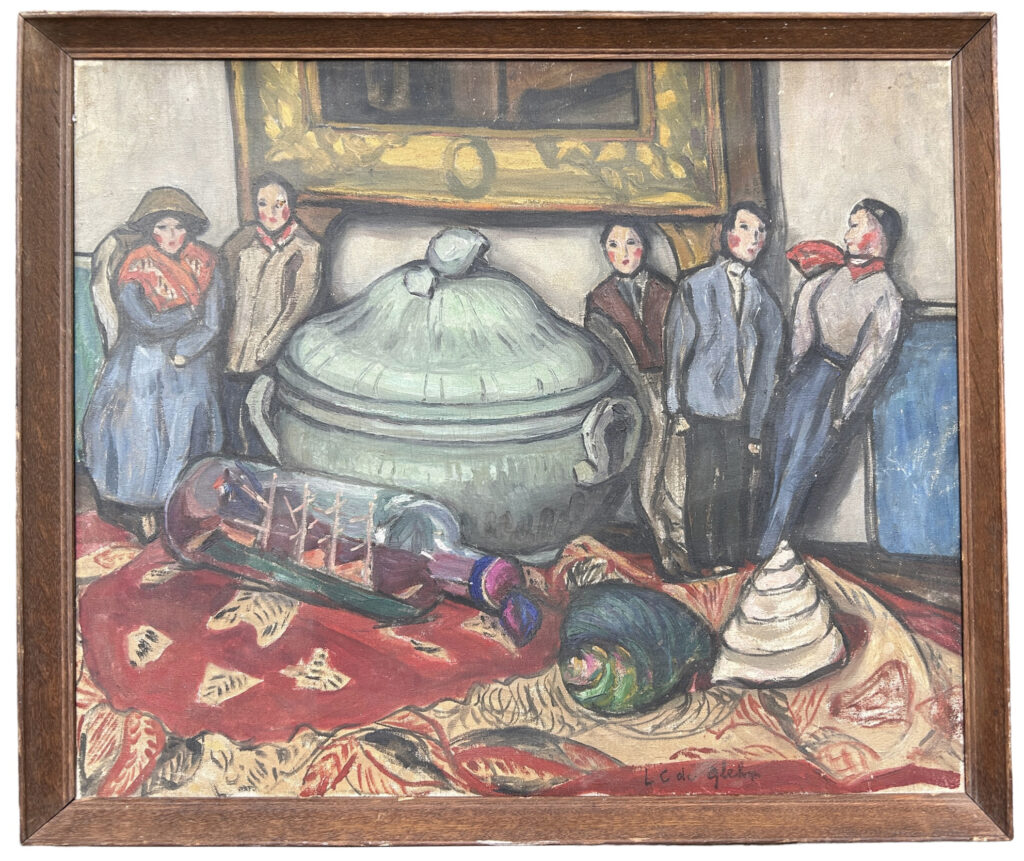
At first I thought they were people, then I saw the tureen and shell, realised the scale, and saw that they were dolls. How odd! A still life extraordinaire, and I liked the colours. I didn’t pay much attention to the signature ‘L C de Glehn’ at the time, as the price tag was within my budget and it was still making me smile, although the surname rang a distinct, but distant, bell.
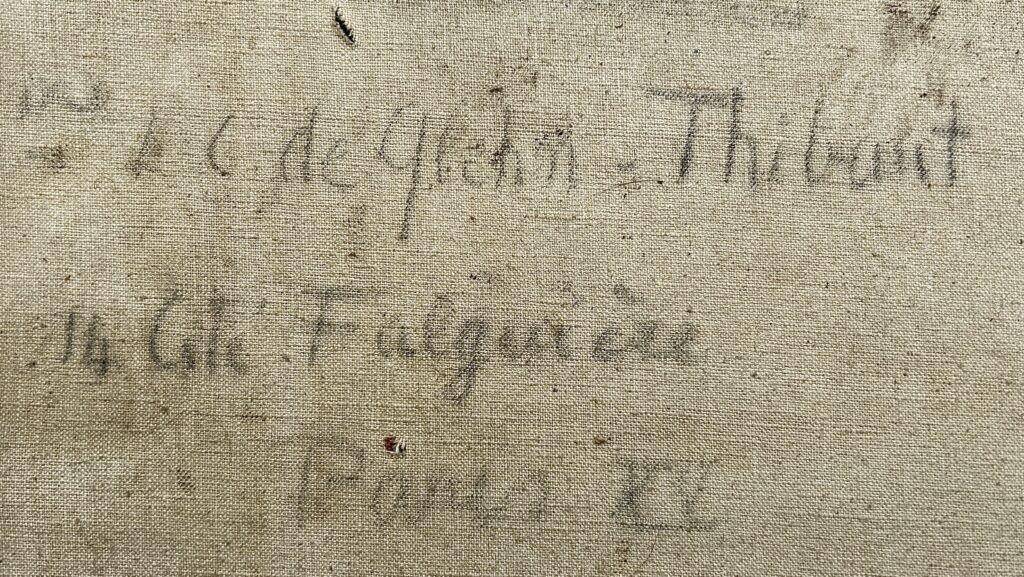
When queuing to pay, I noticed a pencil inscription on the back ‘L C de Glehn Thibaut, 14 Cité Falguière, Paris XV’. Exciting! The Parisian cul de sac called Cité Falguière (below) is renowned as the group of artists’ studios in Paris inhabited across the years by a roster of then penniless, now world famous, artists. Gauguin, Modigliani, Brancusi, Soutine, the list goes on. Despite being cheap, cold, draughty, damp and largely rat-infested, they became a crucible of modern art and central to the hugely influential School of Paris movement. They’re in the Montparnasse district of Paris and terminated with a large, grander hôtel villa (No.14) also containing studios (below right). Modigliani lived at No.14 from 1909-12. Today, only two groups of studios remain.
Now to the artist’s name. ‘de Glehn’ is an unusual name and the distinct but distant bell in my head rung out to to be Wilfrid de Glehn (1870-1951), the famous British Impressionist painter known as ‘the British Renoir’ and celebrated for his portraits and outdoor scenes. A quick google revealed he had a brother and a sister with names that matched the initials – Louis Camille de Glehn and Lilian Catherine de Glehn. Bingo. Lilian married two Frenchmen, firstly the esteemed French medical professor Édouard Rist (1871-1956) and then L.V.G Thibaut. Lilian Catherine (1872-1951) it was.
The de Glehn (previously von Glehn) family were really rather remarkable. Hailing from Revel, Russia (now Tallin, Estonia) they settled in Sydenham, South London and became well-connected, gathering a milieu of famous names around them such as the artist John Millais and the musicologist Sir George Grove. Alfred de Glehn (1848-1936) was a notable designer of French steam locomotives, and Mary Emilie (Mimi) de Glehn (1842-1886) was a gifted pianist and a close friend of Grove. Louise Hume von Glehn Creighton (1850-1936) was a Suffragette, writer of history and biographies, and a social activist.
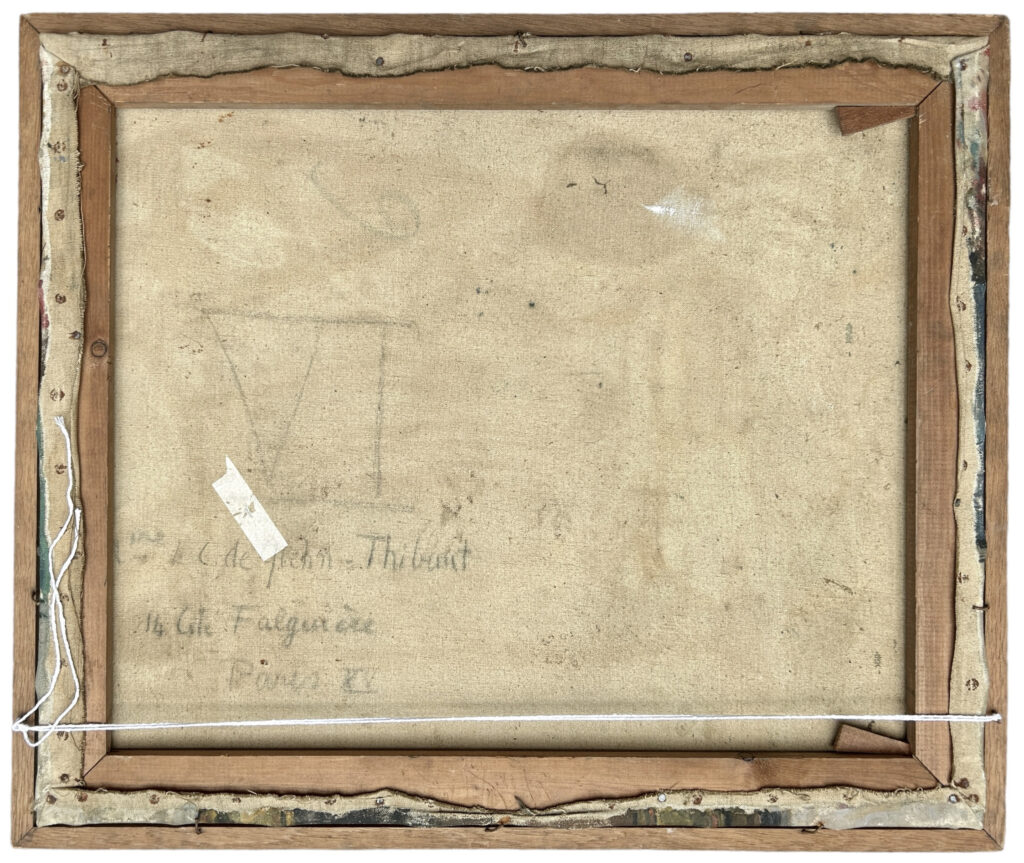
Alexander de Glehn (1838-1908) was a successful coffee merchant involved in charitable work with the Franco-Prussian war who also built narrow gauge railways in France. He had five children. His youngest son Wilfrid Gabriel de Glehn (1870-1951) was the famous British Impressionist painter who married the famous American artist Jane Emmet (1873-1961) and was close to the painter John Singer Sargent. Alexander’s oldest son Louis Camille became a noted French professor at the prestigious Perse School in Cambridge, and lent his house at Grantchester to André Gide and his lover Marc Allegret in 1918.
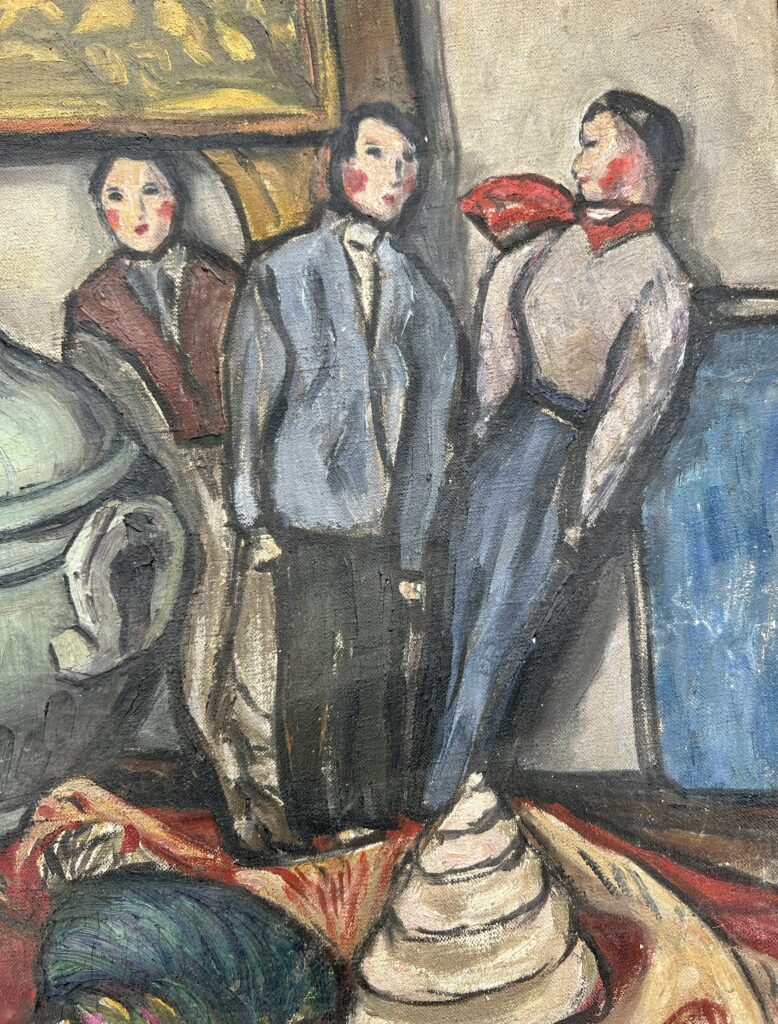
How about Lilian? I can find little about her, which isn’t unusual for a woman at that time. She married Rist in 1900 and settled in France, but their marriage broke down, their daughter died early in her life, and he remarried in 1911. Presumably Lilian met and married L.V.G. Thibaut, thus gaining her second surname, around this time. The next mentions were found in French newspapers which showed that she exhibited at a couple of the notable Salons D’Automne and Salons des Tuileries exhibitions in Paris from the early-mid 1920s, and at the Salon Des Changes in 1933. In 1924, she was listed as being at the Cité Falguière by La Revue de L’Université, and she gave the address of No.14 from 1928-35 at the Salons des Tuileries exhibitions, indicting my picture was painted between those dates. Her flower paintings were variously described as “very delicate” and “a little severe”, a still life as “vigourous…to be noted”, and her landscapes as of “a happy sensibility, and of good work” and “richly coloured” and of “sombre grandeur”. By January 1930, she had been picked up by the prestigious Galerie Druet, who frequently exhibited her art across the early 1930s.
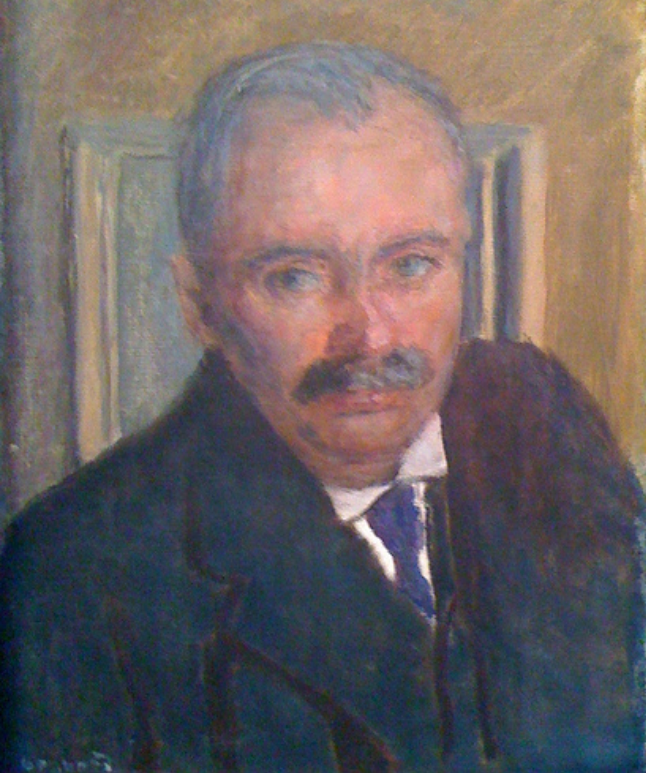
The Galerie Druet was founded by Alfonse Eugène Druet (1867-1916) in 1903. He made his career photographing works of art and selling the photographs, and was close to the famous French sculptor Auguste Rodin from the late 1890s-1903. Galerie Druet was first based at 114 Rue de Faubourg St Honoré, and then at 20 Rue Royale from 1908, and was mentioned by Guillaume Apollinaire. The gallery was highly successful and showed a roster of noted names, from Henri Matisse to André de Rouveyre, Charles Camoin to Georges Pissarro, and Henri Manguin to Paul Cezanne. So her art was seen by and hung in very good company! After Alfonse’s death in 1916, his wife ran the gallery until it closed in 1938.
Lilian was also described as a decorative artist, with three porcelain tea and coffee services decorated with patterns by her being presented by TLB Limoges (Touze, Lemaître & L.Blancher) at the famed L’Exposition Internationale des Arts Décoratifs et Industriels Modernes held in Paris in 1925 that launched the Art Deco movement. They were much admired by the art critic Yvanhoé Rambosson.
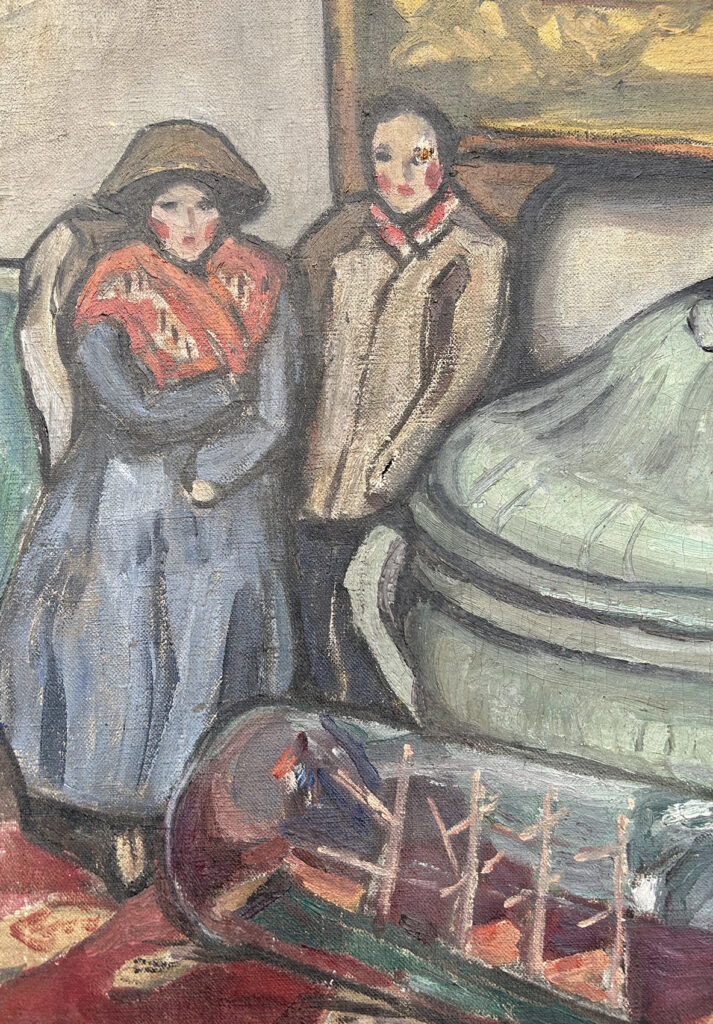
So, Lilian seemed to enjoy the height of her career in the 1920s & 30s, when she was aged in her 50s & 60s. I can’t find anything about what she did before then, or where or with whom she may have studied. Maybe she was a talented amateur who was inspired by her famous brother Wilfrid? She presumably stopped exhibiting when war broke out in 1939, and she died only 6 years after the war ended, aged 78.
It’s strange to think that an English lady in her 50s, from an arguably grand family and with an already famous artist brother, ended up painting at the Cité Falguière in Paris (albeit in the ‘grandest’ studio, hence the almost bourgeois choice of props in my still life) – unless that was just her studio and she lived elsewhere with her husband Monsieur Thibaut. There’s definitely more to be uncovered here about this well-connected woman artist who has been lost in the mists of time.
Sources
https://gw.geneanet.org/bourelly?lang=en&n=von+glehn&oc=0&p=lilian+catherine
https://www.jstor.org/stable/44813089
https://gallica.bnf.fr
http://atelierlog.blogspot.com/2014/05/la-cite-falguiere.html
https://www.foblc.org.uk/2020/12/from-russia-with-talent-remarkable-de.html#.ZFDz33bMI14
POSTSCRIPT
Whilst hunting around for more information on Lilian de Glehn Thibaut, I came across a signed etching by her on eBay, which I bought. It shows sailing boats and dinghies in a harbour with palm trees, homes and buildings with domed roofs – probably somewhere on the south coast of France, or the north coast of Africa. I presume that is was produced sometime in the 1920s-30s, judging from the style and the information above. This shows two things; that she had learned the art of producing etchings; and also – because it is signed 2′ etat (2nd state) – that she had a large enough following to produce etchings for, and etchings in more than one state at that. The plate measures 20.3cm wide by 16.5cm high, and I think it’s rather lovely!
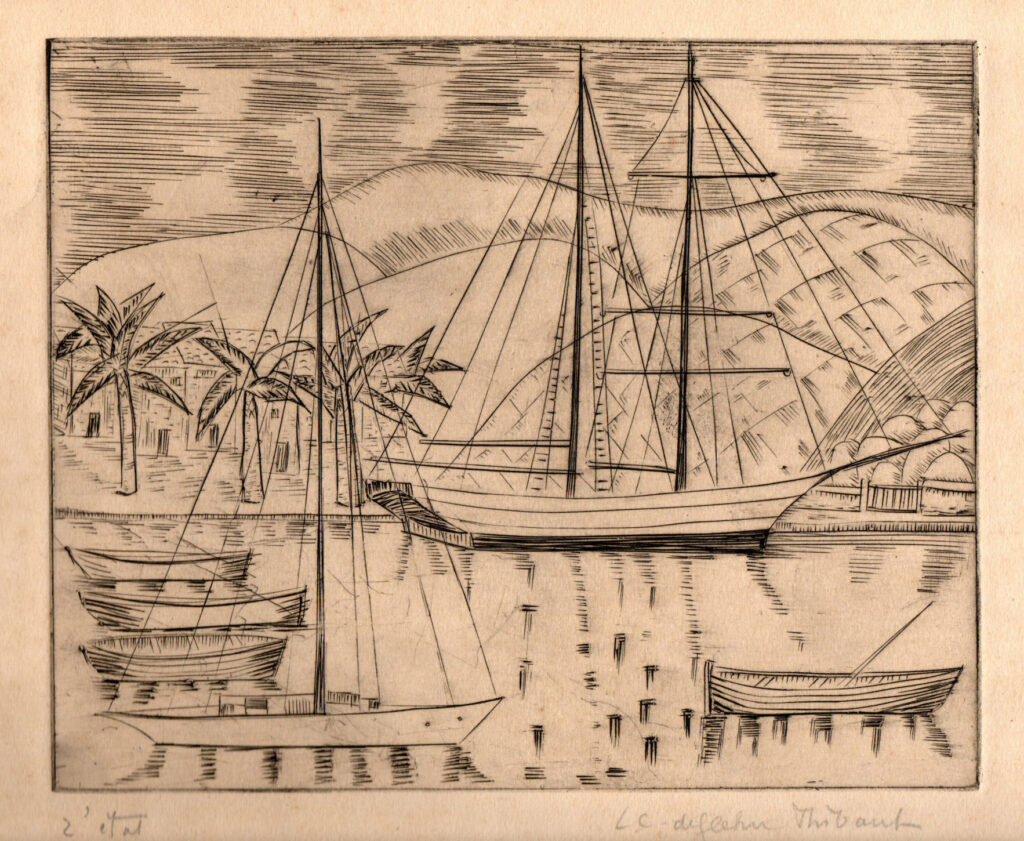
POSTSCRIPT II – A Modigliani Connection
Some months after publishing this blog post, I was contacted by an New York-based art historian called Julia May Boddewyn, who told me that she had come across my blog post whilst researching Lilian de Glehn’s partner/second husband Thibaut. She has identified him as Fernand Thibaut, a multi-talented Belgian artist born in 1879 who was known in Paris from 1903 until the late-1930s for not only his art but also for producing designs for decorative arts from ceramics to stained glass, carpets, and more. Some of these designs were produced together with Lilian. The ‘L.V.G.’ initials for Thibaut that I had found on a genealogical website must be erroneous, but are intriguingly the same as Lilian von Glehn’s, indicating a mistake may have been made.
However, the reason for May Boddewyn’s research, and her job, were utterly and completely surprising to me when she revealed her finished article. As a founding board member of The Modigliani Initiative, her pioneering and original research has led to the sitter in Modigliani’s 1916 painting of ‘A Man’ (Detroit Institute of Arts, Bequest of Robert H. Tannahill, 70.186) being identified as Fernand Thibaut. That means that Thibaut knew Modigliani well enough to be painted by him in 1916. He knew other artists from that critically important School of Paris circle too. She has also discovered more about the man that Lilian married, including that they lived (and worked) together at 14 Cité Falguière for over two decades around the 1920s & 30s. As well as her brother Wilfred, her second husband Fernand would obviously have been an inspiration to Lilian.
Most importantly, May Boddewyn’s rediscovery of this information puts a name back onto this key portrait by Modigliani, but it also reveals the artistic Parisian milieu that Lilian de Glehn Thibaut – and Thibaut himself – worked in.
You can read her fascinating article by clicking here.
The story unravels a little more…

